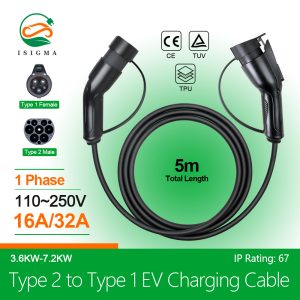
The Race for Faster Electric Vehicle Charging: AC vs. DC Charging
As the adoption of electric vehicles (EVs) continues to grow, the demand for faster and more efficient charging solutions becomes increasingly vital. The two primary methods of charging EVs are alternating current (AC) and direct current (DC) charging. While both serve a purpose in the EV charging ecosystem, the key differences between them have significant implications for future charging infrastructure development and user experience.
DC Fast Charging: The Speed Leader
Direct current fast charging, or DC fast charging, has emerged as the leader in rapid charging technology. By delivering high power levels directly to an EV's battery, it bypasses the need for internal conversion from AC to DC within the vehicle. This direct transfer allows for charging speeds of up to an impressive 350 kW, translating to roughly 200 miles of added range in just 15 minutes for some EV models.
The potential for such rapid charging makes DC fast charging an attractive solution for commercial charging stations, particularly along highways and major travel corridors where drivers seek to minimize charging times during long trips.
AC Charging: The Home and Workplace Staple
While DC fast charging is undoubtedly the speed champion, AC charging maintains its importance in the EV charging landscape. Most home and workplace charging stations are equipped with AC chargers, which offer power levels up to 22 kW. Although significantly slower than DC fast charging, AC charging remains a practical and economical solution for overnight top-ups and extended parking situations.
Furthermore, many EVs have been designed to accept both AC and DC charging inputs, ensuring a seamless user experience across various charging scenarios.
Factors Influencing Charging Speed
It's essential to recognize that an EV's charging speed is influenced not only by the charging method employed but also by the specific vehicle model and charging infrastructure. Certain EVs may have battery packs incapable of handling the high power levels provided by DC fast charging, while some charging stations might not deliver the equipment's maximum possible power output.
In conclusion, the future of EV charging will likely include both AC and DC charging solutions, with each playing a distinct role in meeting the diverse charging needs of EV drivers. As charging technology advances and infrastructure expands, the balance between speed, convenience, and efficiency will continue to shape the EV charging landscape.





